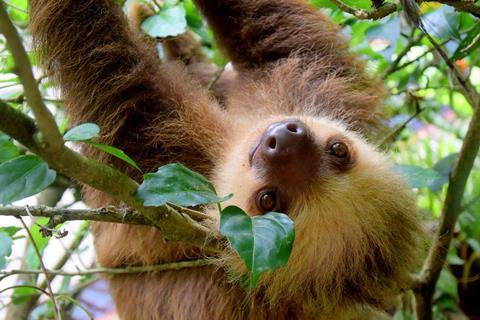The fur of Costa Rican sloths appears to harbour antibiotic-producing bacteria that may hold a solution to the growing problem of antimicrobial resistance.
A team of scientists who studied the fur say they found the possible existence of antibiotic-producing bacteria that could potentially be used to control pathogens or inhibit competitors like fungi.

Thei research was published in the paper ’Antibiotic-producing Micrococcales govern the microbiome that inhabits the fur of two- and three-toed sloths’, which appears in Environmental Microbiology, an Applied Microbiology International publication.
Sloth fur is home to communities of insects, algae, fungi and bacteria, yet the slow-moving mammals appear to be surprisingly infection-proof.
Corresponding author Max Chavarria, a researcher at the University of Costa Rica, told AFP: “Obviously when there is co-existence of many types of organisms, there must also be systems that control them,” he said.
Chavarria and a team took fur samples from Costa Rican two- and three-toed sloths living in a sanctuary to examine what that control system could be.
He says he has already pinpointed 20 candidate microorganisms waiting to be named, but there is a long road ahead in determining whether the sloth compounds could be useful to humans.
Declining populations
Both the two-toed (Choloepus Hoffmanni) and three-toed (Bradypus variegatus) sloth species have seen their populations decline, according to the International Union for the Conservation of Nature’s Red List of Threatened Species.
They live in the canopies of trees in the jungle on the Caribbean coast, where the climate is hot and humid.
According to the paper, the complex sloth fur ecosystem has insects, algae and fungi coexisting in a symbiotic relationship which requires different levels of controls, but most of these mechanisms remain unknown.
”We investigated the bacterial communities inhabiting the hair of two- (Choloepus Hoffmanni) and three-toed (Bradypus variegatus) sloths and evaluated their potential for producing antibiotic molecules capable of exerting control over the hair microbiota,” the authors said.
”The analysis of 16S rRNA amplicon sequence variants revealed that the communities in both host species are dominated by Actinobacteriota and Firmicutes. The most abundant genera were Brevibacterium, Kocuria/Rothia, Staphylococcus, Rubrobacter, Nesterenkonia and Janibacter.
”Furthermore, we isolated nine strains of Brevibacterium and Rothia capable of producing substances that inhibited the growth of common mammalian pathogens. The analysis of the biosynthetic gene clusters of these nine isolates suggests that the pathogen-inhibitory activity could be mediated by the presence of siderophores, terpenes, beta-lactones, Type III polyketide synthases, ribosomally synthesized and post-translationally modified peptides, non-alpha poly-amino acids like e-Polylysine, ectoine or non-ribosomal peptides.
”Our data suggest that Micrococcales that inhabit sloth hair could have a role in controlling microbial populations in that habitat, improving our understanding of this highly complex ecosystem.”







No comments yet